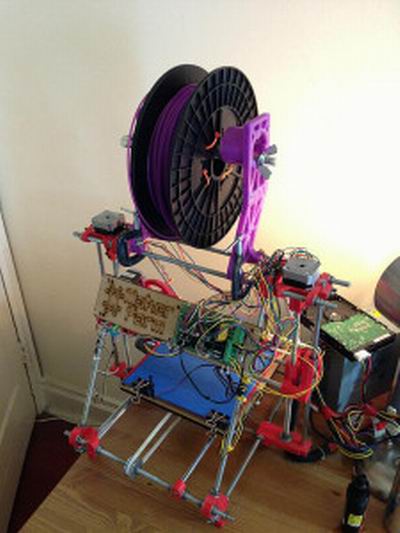
|
|

|
|
| April 24, 2024 |
|
3D printing brings new promise 
The growth of three dimensional (3-D) printing technology brings opportunities scientific, entrepreneurial – even culinary. Some people are using the devices to build custom creations out of chocolate.
“I don’t know if it’s good chocolate,” said Prabhjot Singh, Director of Additive Manufacturing at General Electric (GE), which uses 3-D printers to make parts for aviation and advanced energy-generation machinery – presumably out of non-edible materials. The process delivers performance while producing designs and prototypes for parts more quickly. Three dimensional printing uses a digital model to create a 3-D object by adding consecutive layers of material to it. That requires a digital model, raw material that can include plastic, metal and well, chocolate, and a personal or industrial-strength printer. “This means that almost anyone, located almost anywhere can own and operate a machine,” said Terry Wohlers, president of Wohlers Associates, an independent consulting firm. “We envision individuals in small villages in remote areas of the world could operate these machines to produce basic products for their villages and neighboring villages. Over time, it could develop to become an important source of economic development in a community.” And it can be done without access to a manufacturing facility. “That’s the beauty of 3-D printing,” he added. “‘It does not require a large capital investment or major infrastructure to operate.” Large companies use Industrial-strength 3-D printers that can cost more than $1 million to meet high demand. But Wohlers says ”simpler products, such as jewelry, sculptures, games and puzzles can be produced on low-cost equipment.” Despite the cost, some developing countries already use 3-D printers. Singh says India and China already have “pockets of their economies that are able to afford such machines,” while Brazil and South Africa are getting into 3-D manufacturing on a smaller scale. India and China have “robust” research communities, says Singh; and China, which is printing large structures and pursuing aerospace applications, is “deploying the machines quite widely.” For GE, the advantages of 3-D printing for large aerospace applications can be “game-changing,”he said, although in his view, 3-D printing’s radical advantage is customization. “If you can customize parts to a user and … make it much better for that person to use that part, then that is quite revolutionary,” he said. The prospect tickles the imagination of Kate Ganim, Co-Director of mobile design education firm KIDmob and a team member of iLAB//Haiti, a non-profit group that helps Haitians prototype 3-D-printed umbilical cord clamps for clinics, build chairs without rulers or parts for broken machinery. She is excited about the potential of 3-D printing, particularly for bypassing “weak or corrupt infrastructures” in developing countries and for providing prosthetics – a great application in Haiti, says Ganim. “A massive number of people lost limbs in the 2010 earthquake,” she said. “We could conceivably 3-D-print prosthetics to custom-fit the folks that need them. This would be mass customization.” Ganim says the group is “exploring how far we can push the technology” and would be interested in additional rapid prototyping technologies, as well as recyclers. With materials like a spool of ABS filament selling for around $45, Ganim says the group would like to “convert printed ABS plastic back into printable spools.” iLab//Haiti hopes to harvest plastic from garbage, sterilize it and convert it into spools for printers. (Source: Techtronics) Story Date: December 22, 2013
|